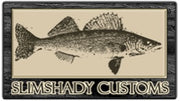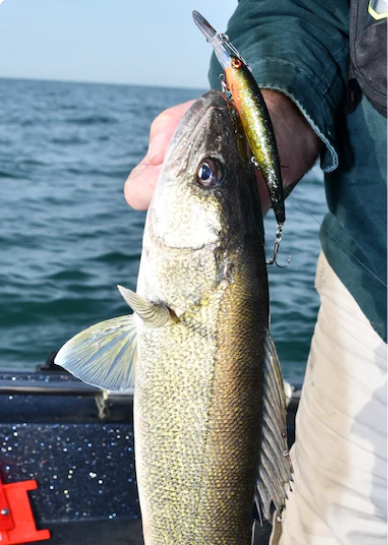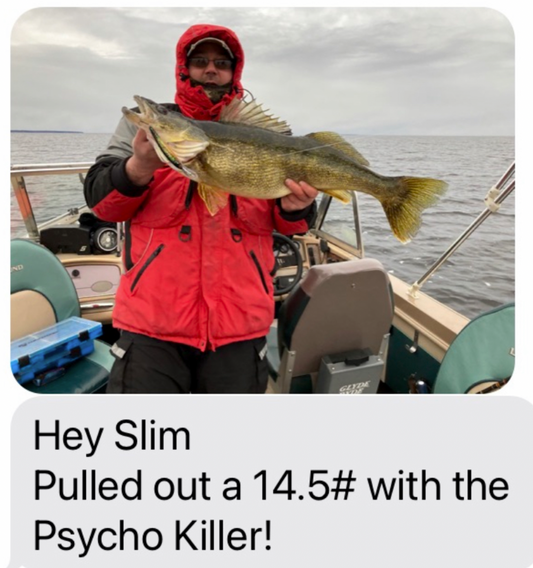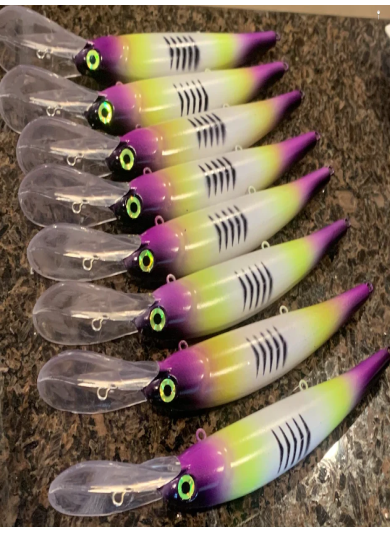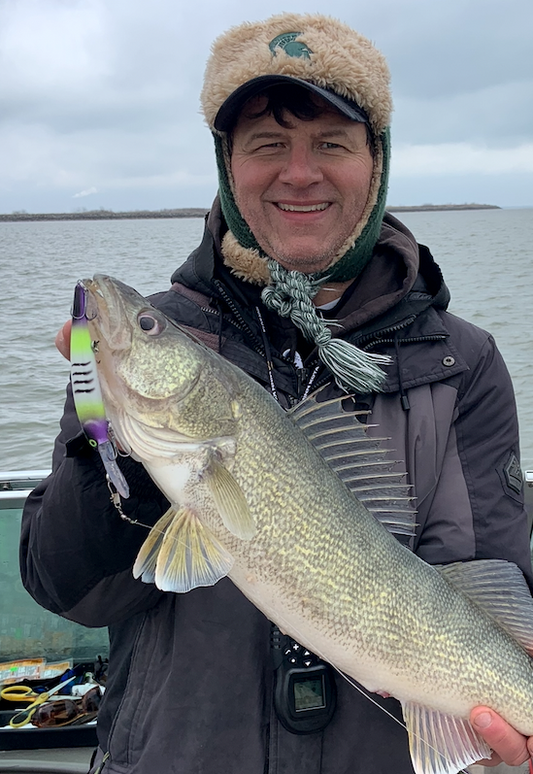Article: Fishing Tips- Planer Boards (Big Boards vs In-line planers)
If you enjoy fishing for walleyes on big water, using planer boards and crankbaits are one of the most efficient ways to do so. In general, planer boards are designed to run to one side of your boat or the other, with the purpose of spreading out your baits and getting them farther from the boat.
Big Boards vs In-line Planers
When it comes to planer boards, there are really two primary categories you can select from. Big boards, or in-line planer boards. I am not going to go into the details of the various brands of either type, as I may cover that in another article. However, for this article, I am going to focus on the pros and cons of each type.
Big Boards
The upside of big boards is that when the fish hits, it pulls the line from the release and you get to fight the fish without having to deal with the board. The "used" release stays on the planer board line and eventually slides all the way to the board and you take them off when you bring the boards in, usually at the end of the day. Since you can run the big boards way out from the boat, it allows you to run 8+ lines off of each side (if you are allowed that many).
The downside to big boards is that they are a major pain to bring in and out, which makes it much more of an effort to pull everything in and run back upwind for another pass. With the smaller boats that most of us use (21 feet or under), it is much more comfortable to troll downwind, especially if you don't have someone manning the wheel full-time. That said, most "6-pack" charter guys run them because they tend not to make short passes but instead keep circling an area and just leave the boards out.
I have built and used several sets of big boards over the years, and they do work great in certain situations. However, I haven't used mine in about 5 or 6 years for the reasons mentioned above.
In-line Planer Boards
The other category of planer boards are what we know as "in-line" planer boards. In-line planer boards attach to your fishing line and are designed to stay attached until you bring the fish part way in, where it is removed so you can finish fighting the fish and get it in the net. I would also say that this is the biggest downside to in-line boards, in that you do end up fighting the board (at least somewhat) until it has been removed. In-line boards can be set up so that the front clip releases, which reduces the pressure on the fish as you are bringing it in. It can be a challenge to get the setting just right, so that you can release it when you need to, yet not have it release on its own when there's no fish on it.
There are several upsides when it comes to running in-line boards:
- They are easy to bring in and out, which makes it easier to make short down-wind passes.
- They are relatively inexpensive to purchase (per board) and no modifications are needed to your boat (no mast that needs to be installed, etc).
- They are easier to store than big boards when you are not using them.
- They work great at low speeds (like for pulling harnesses, or crankbaits at slow speeds, whereas big boards need to be moving at least 1.5 - 2 mph to keep enough tension on the planer board lines (IMO).
The two biggest "players" in this category are the "Off-Shore" Brand and "Church's". I am not going to debate which is better, because that can be like arguing politics, and we know how that ends up. I have only ever used Off-Shore boards, and I will say that they work great.
Tattle Flags:
Both brands offer some type of "tattle-flag" kit, which is designed so that the flag goes down when a fish hits the lure. Without these kits, the flag is stationary, so you need to watch the boards closely to determine if you have a fish on or not.
Tattle Flag Tips:
- If you are using a tattle-flag system, it is critical to leave some slack between the front and rear clips, or the flag will not go down.
- DIY tattle flag kits can be made quite easily for a few dollars per-board. There are videos on YouTube that will show you how to make them.
- Tattle flags really shine when pulling harnesses, as you tend to get lots of "junk" fish and bait stealers. I set the tension low so that I can see when something is messing with my baits.
- Tattle flag systems can also be used with crankbaits or mini-disc/spoon combos, however, it usually requires some slight modifications to your tattle-flag set-up. Otherwise, the pull from the crankbait itself will pull down the flag and make it appear that you have a fish on when you do not. To resolve this issue, I either tighten up the spring on the tattle flag by moving it to another hole in the board, or by adding a rubber band from the flag to the front clip.
That should about cover it for now. I may cover some other aspects in a future article. See you on the water!
